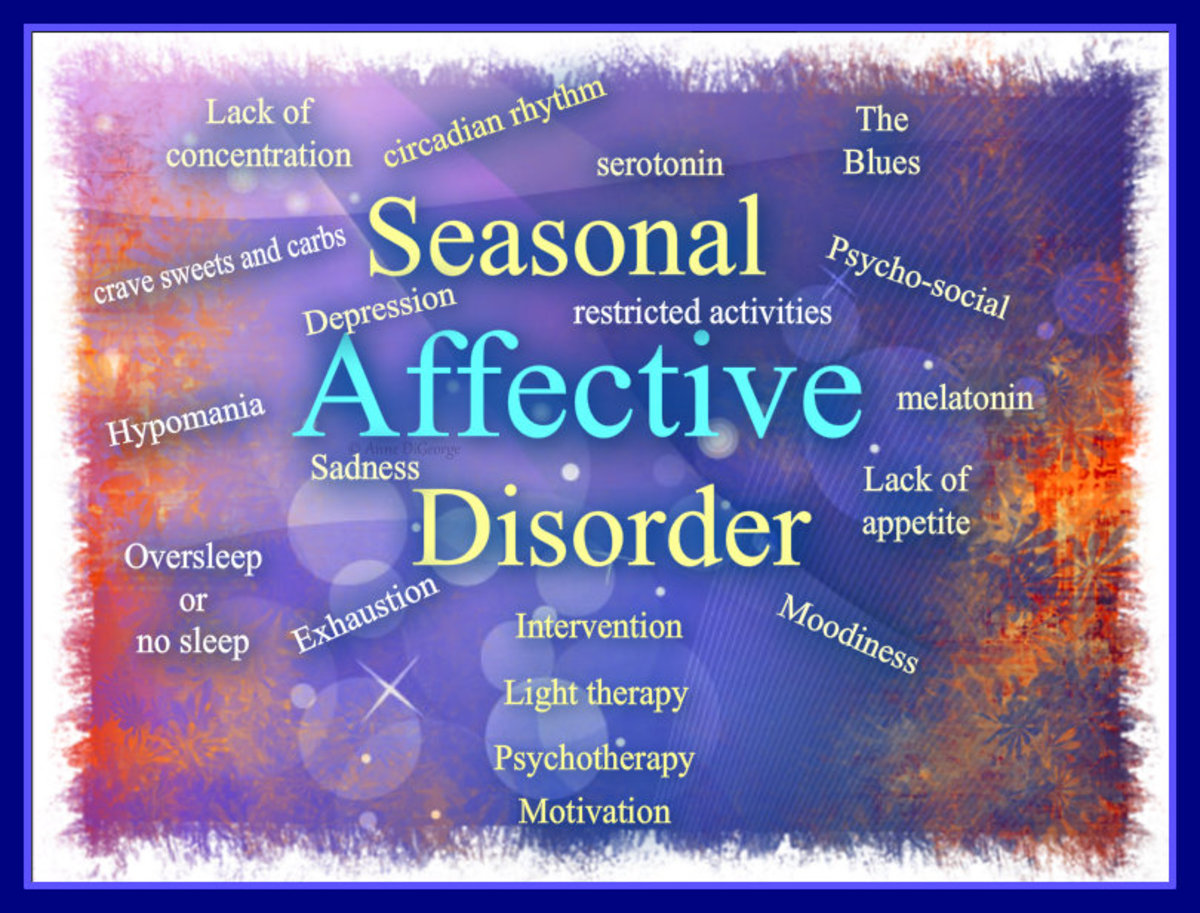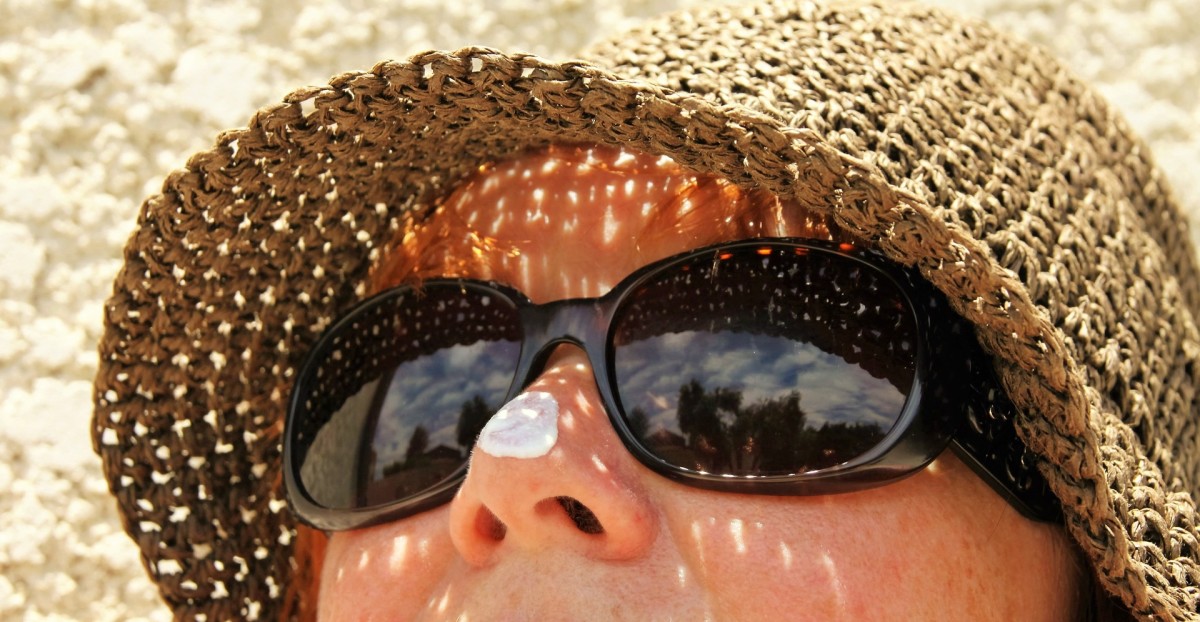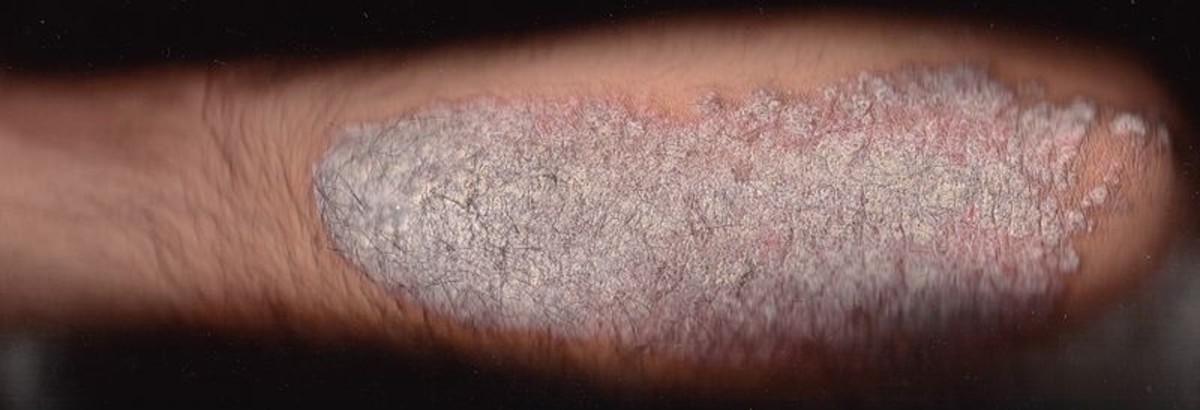- HubPages»
- Health»
- Mental Health»
- Clinical Depression
Seasonal Affective Disorder (SAD) Lights: How to Choose Them, Use Them and What the Research Shows

Living in the rainy Pacific Northwest and having been a mental health practitioner for years, I can tell you seasonal affective disorder (SAD) is a very real condition affecting approximately 6% of the population. In fact, it's something I have myself battled since moving to Oregon. In case you aren't familiar with the syndrome, it's a type of seasonal depression usually seen in the fall and winter months when there's a deficit in sunlight. The symptoms are similar to clinical depression although it's cyclical in nature and the treatments have a few differences.
Like any form of depression, SAD can have a devastating effect upon a person's life. If you find you're consistently experiencing the winter blues, are sleeping more than usual, gaining weight and/or feeling moody, it's important you don't dismiss these signs. If you think you are suffering from this mood disorder, it's imperative you see your doctor or a qualified mental health practitioner.
Light therapy is a successful treatment for some sufferers of SAD as it's assumed the symptoms are a result of a lack of sunlight. Using artificial lights that mimic the real thing can cause a beneficial chemical reaction in the brain.
Many doctors have begun recommending light boxes for easing the symptoms of seasonal depression. They are relatively easy to find and may be purchased without a prescription. Some insurance companies will even cover the cost if the patient has a written doctor's prescription.
What the Studies Have Shown about Light Therapy for SAD
Knowing what the science reveals about light therapy will help you in deciding whether or not this intervention is a good option for you. It can also assist you in choosing the right light box for you as well.
Highly Recommended Reading by Dr. Norman Rosenthal
What You Need to Know About Seasonal Affective Disorder Lights
First of all, they're not all the same. Some of them are manufactured for the treatment of some skin disorders and not for SAD, so pay close attention.
Here are some answers to frequently asked questions about seasonal affective lights:
- What does lux mean?
You need to understand lux, its symbol is lx. Its literal translation is light. It's basically a measurement of illumination. For lights, the higher the lux, the more light it emits. Some of the higher powered light boxes emit 10,000 lx. The lower the lux, the longer you'll need to be exposed to the light.
- If full spectrum light more effective for SAD?
Traditionally, full spectrum lighting has been used for SAD. Dr. Norman Rosenthal, the man who coined the term seasonal affective disorder and a pioneer in its research, chose full spectrum lighting in his treatment since it most closely mimics daylight. Recent research, however has shown that any white bright light is helpful... On a cautionary note, just make sure ultraviolet light is filtered out as it can be damaging to the retina.
- What about blue lights?
It may appear that sunlight is white, however it is in fact comprised of the full spectrum of colors. Catching sight of a rainbow will give you a glimpse into these multiple colors. Advanced research has shown that a particular bandwidth of blue light (around 470 nm green-blue) is effective in treating SAD.
- What is the minimum lux needed for the SAD lights?
Studies have shown the lights need to be at least 2500 lx for effectiveness.
- What about the visor lights? Do these work?
The newer invention of visor lights has shown some promising results, with some studies showing a moderate response rate. Clearly more research is needed here since it's not yet been proven the visors are as effective as the standard light box. One benefit is that the lights are properly positioned above the eyes. Another benefit is their mobility since you're not stuck in one place for too long. Finally, the visors tend to be less expensive than some traditional lights.

Best Practices for Light Therapy
- Position the SAD lights above your eyes.
One study by Glickman showed that where the light is positioned is important. Apparently light therapy is more effective when the light is positioned above your eyes so that it's hitting the bottom part of the retina. It makes sense when you think about it... Photoreceptors are located at the top of the eyes since natural light is coming from the sky. For this reason, getting one that's capable of being wall-mounted or properly angled is ideal.
2. Follow the manufacturer's instructions on how far away you should be from the lights .
The optimal distance between you and the light box depends upon many factors like lux and size of the unit. So, follow the maker's instructions carefully.
3. Use light therapy in the morning.
Research has revealed using light therapy in the morning is the most effective. 10,000 lx for 30 minutes in the morning just after awakening is seemingly the most effective. It is advisable, however to stay within the manufacturers recommended guidelines.
4. One of the main reasons light therapy fails is lack of compliance!
As such, consider very carefully the unit you pick. Think about your lifestyle, your schedule and your needs. Choose one that has the features that increase the chances you will actually use it! Many are small and portable, some are programmable, some have variable brightness settings, some are battery-operated, etc...
Recommended SAD Lights
I've done extensive research on the different types of light boxes. As a result, it's clear that some are simply more efficacious than others. Some light boxes on the market are no more effective than a bright light bulb... so choose wisely! I'm only recommending the following products that have been studied and supported by medical research. They also all filter out UV light for safety reasons.
Please note: some companies are advertising their light bulbs as "SAD lights". There is no such thing as a standard light bulb that's powerful enough to be effective for SAD. It's just a gimmick.
Look for companies that have been in business for a long time. And, make sure they offer reasonable guarantees and warranties! Don't forget to investigate the cost of replacement bulbs, too.
Philip's goLITE BLU
This comes backed by such organizations as sad.org.uk and the National Sleep Foundation due to its effectiveness supported by medical research.
Features:
- Small, light and portable
- Easy to use touchscreen
- Backlit clock with a timer
- Fully programmable
- Variable brightness settings
- Comes with a rechargeable battery
- Has a wide treatment field
- Two year warranty
Litebook Elite
Features:
- Timer with multiple increment settings: 15, 30, 45 and 60 minutes
- Built-in rechargeable battery
- Small, light and portable design
- Comes with international adapters
- Comes with a nylon carrying case
Alaska Northern Lights: The North Star 10,000
Features:
- 10,000 lux at 24"
- Broad spectrum lights
- Horizontal or vertical positioning (can be mounted to a stand that's sold separately)
- Lifetime warranty!
- Bulbs last 4 to 5 seasons
- One year guarantee for light bulbs
- Semi-portable, although it weighs 11 pounds
Uplift Technologies DL-930 Day Light
Features:
- 10,000 lux at 12"
- Angled light source for maximum effectiveness
- 100% UV filtered
- Has two light settings
- Has a hole on the back for wall mounting
- Word of warning: it's big!
- Five year warranty
The Sunbox Company
The Sunbox Company has been in business for 25 years and has a proven track record for making quality light boxes. It's hard to go wrong with any of their products. Which one you choose will just depend upon your personal preference and budget.
Resources
- Mount Sinai School of Medicine: Light Therapy for Seasonal and Nonseasonal Depression
- Society for Light Treatment & Biological Rhythms
- SAD.org.uk - Recommended S.A.D. Manufacturers - UK Voluntary Organisation providing Information, Adv
SAD.org.uk - Recommended S.A.D. Manufacturers, recommended SAD light products, approved SAD light suppliers, Approved SAD light products.












